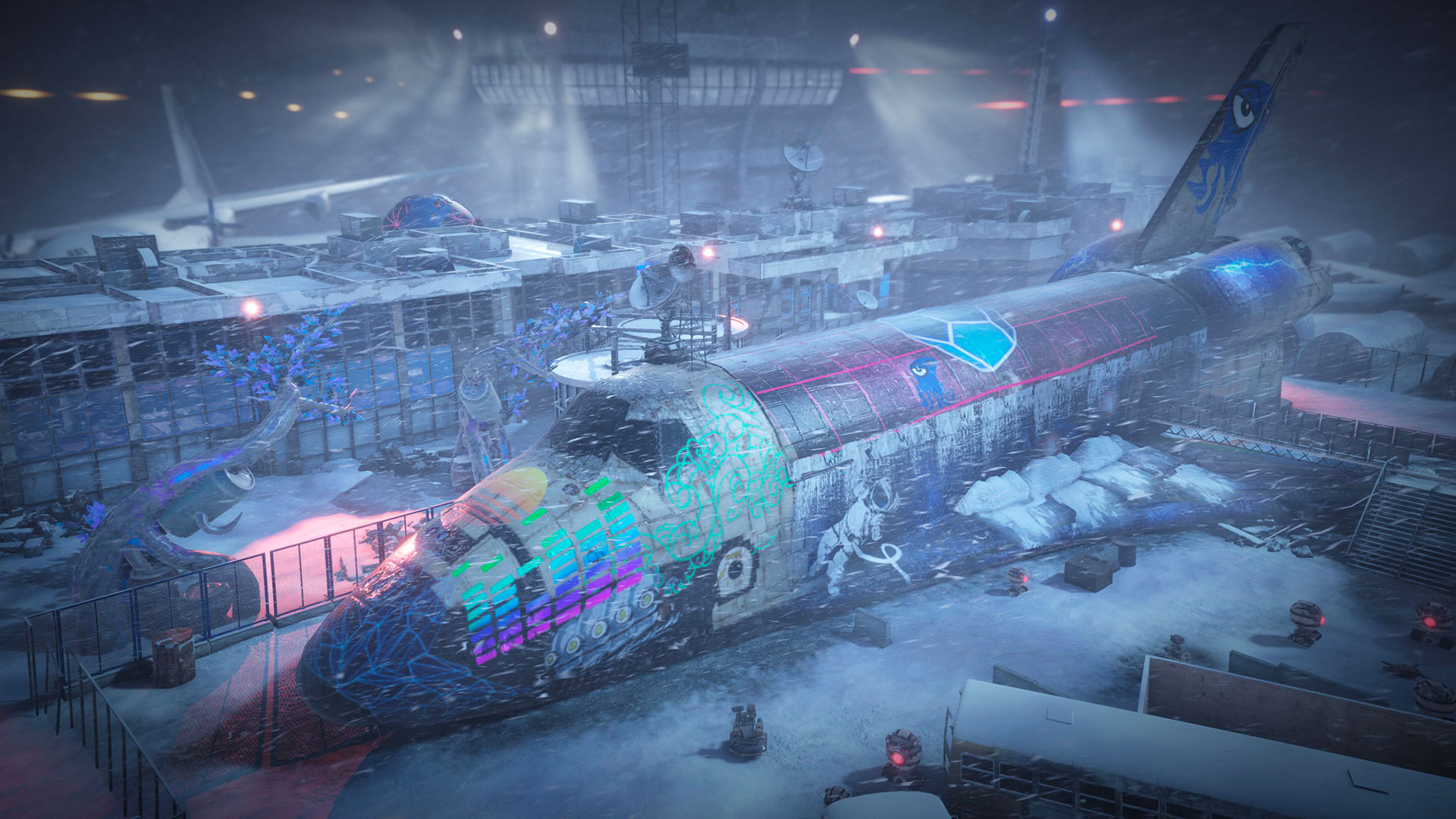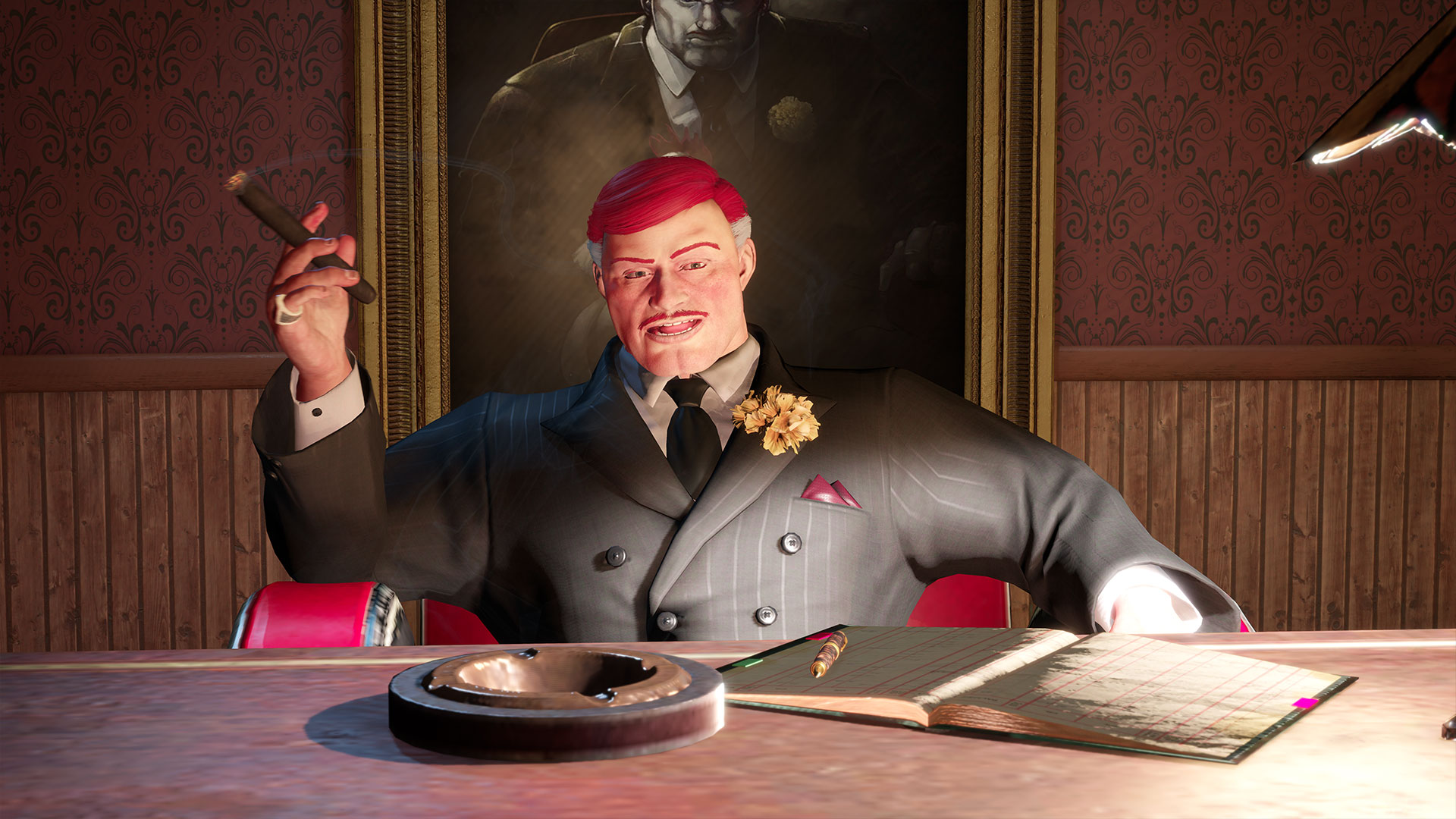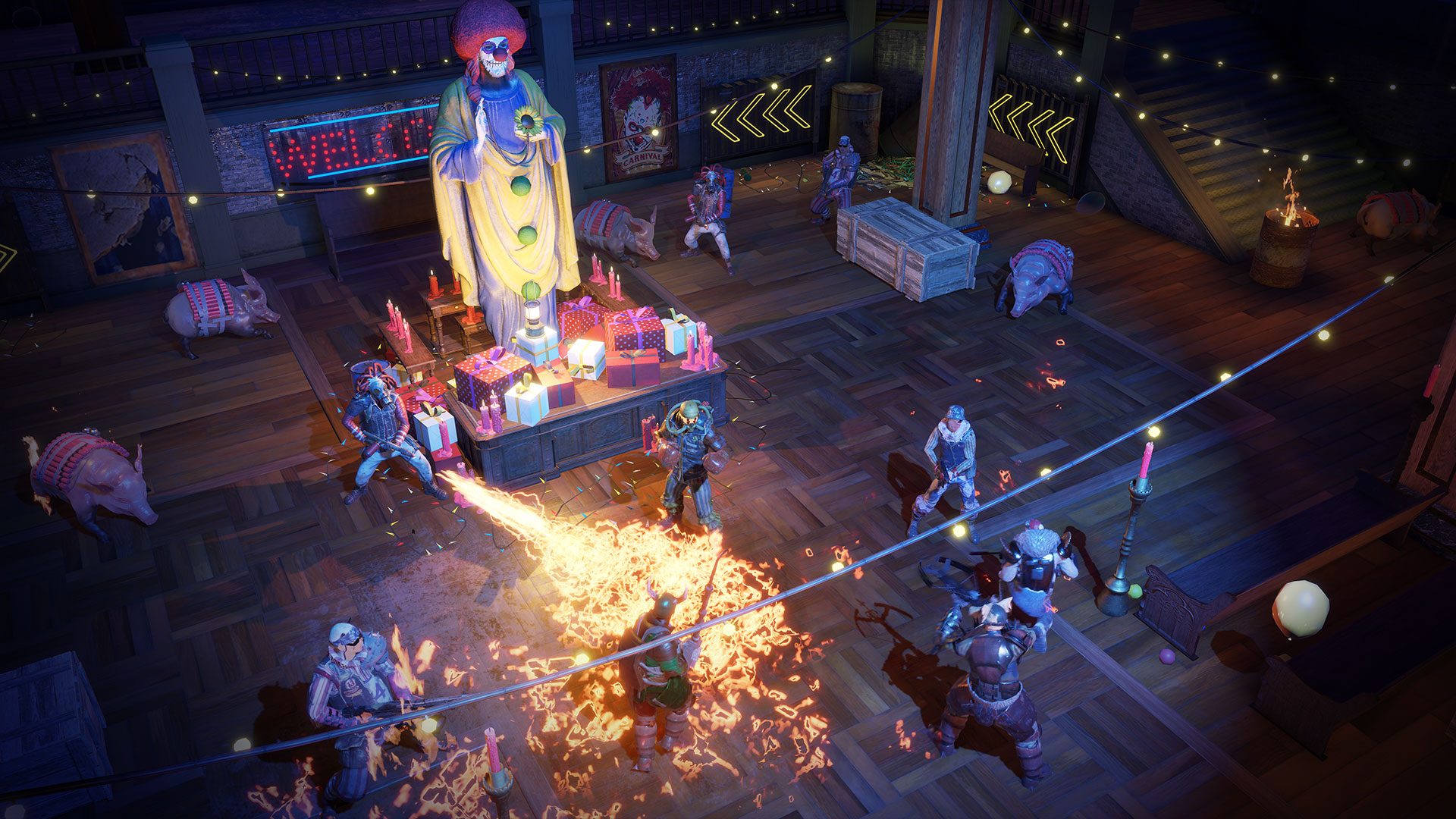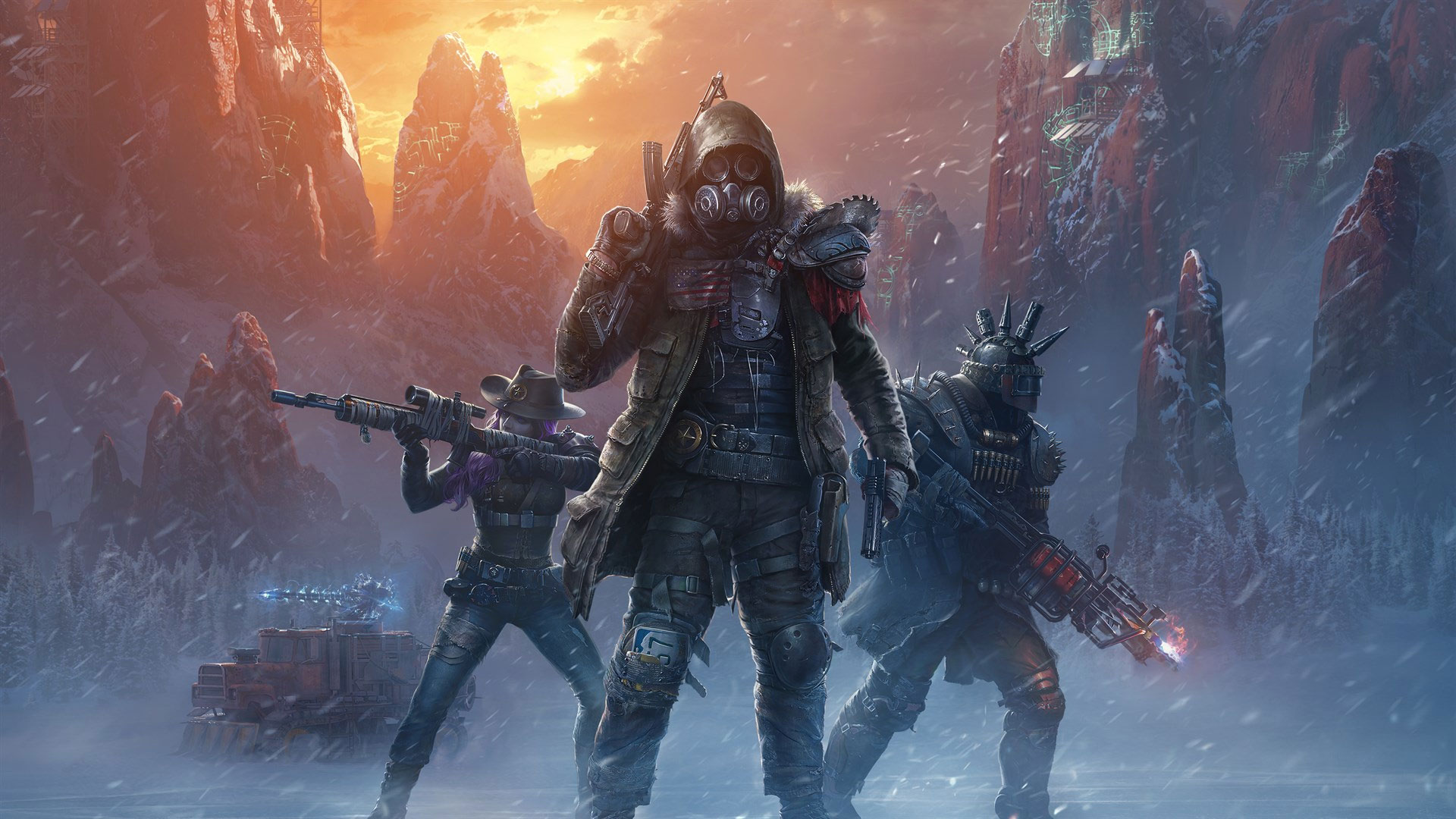GamesRadar+ Verdict
Wasteland 3 doesn’t bring much new to the table, both as a CRPG and as a piece of post-apocalyptic fiction. But, it’s a terrifically executed role-playing game that rewards player investment from beginning to end.
Pros
- +
Expertly accommodates and reacts to player choices
- +
Tactical turn-based battles are tense and scrappy
- +
Each location feels unique and interesting
Cons
- -
Writing occassionally leans on lazy/problematic tropes
- -
Frustrating late game save bug
Why you can trust GamesRadar+
I found the Provost in a storage unit beneath a shopping mall. The Warrens, a subterranean space under the Bizarre bazaar, had been taken over by the Payasos - a violent gang in clown masks who love nothing more than strapping dynamite to a pig and lighting a match. After defeating a group of them, I used my lockpicking skill to open a garage door. The Provost, who I had never seen or heard about prior to this moment, stood there expectantly. He greeted me in Latin, but Wasteland 3 provided no option to speak with him further. I shrugged and left.

Release date: August 28
Platform(s): PS4, Xbox One, PC
Developer: InXile Entertainment
Publisher:
I returned to the Bizarre to turn in my quest. And while getting patched up by the local doctor, I spotted the Provost running across the screen. Later, while walking through Denver — an area separated by miles of hostile terrain — the Provost showed up, wandering near my squad. Hours later, while taking on one of Wasteland 3’s many factions, the Provost took up arms for my cause and fell in battle. We had only ever spoken in a language that was dead long before the bombs fell.
I still don’t know what the Provost’s whole deal was. That’s part of the beauty of Wasteland 3, the newest entry in the Fallout-inspiring isometric RPG series. There is more going on beneath the surface than players will ever see. It remembers your choices, and builds on them in surprising ways. It is as big as the mushroom clouds that ushered in its apocalypse and as deep as a billionaire’s fallout bunker.
Unlike a nuclear catastrophe, though, inXile Entertainment’s latest throwback RPG is a slow burn. It has more in common with the green clouds of radiation that creep across its overworld map than it does with the world-ending event its characters refer to, with mythic significance, as the Great Deluge. It introduces your main quest right away, then jams 20 hours between you and the moment when you even begin to accomplish your goal.
Soldiers

As the game opens, the Desert Rangers - the paramilitary force that drives the action of these games - have travelled north from the arid wastes of Arizona to the frozen wastes of Colorado to meet with Saul “The Patriarch” Buchanan, the monarchic ruler of the Centennial State. This imposing figure has promised the Rangers resources to help the group rebuild their homeland after the events of Wasteland 2. But, in order to secure the supplies, the Rangers need to help Buchanan track down and apprehend his three adult children. Each is holed up somewhere in Colorado and each is more unhinged and violent than the last.
I played through this setup back in March, when I previewed Wasteland 3, and wasn’t especially impressed. In a world where Disco Elysium and Divinity: Original Sin 2 have pushed the boundaries of what a CRPG can be, it didn’t seem that Wasteland 3 was bringing anything new to the table. After four hours with that preview build, I found it fun enough, but pretty formulaic.
And, my initial take wasn’t wrong, per se. Wasteland 3 isn’t as innovative as Disco Elysium. As per usual in choice-driven RPGs, there are factions to ally with or kill. The grid-based combat is a welcome but familiar mixture of new XCOM’s tactics and the “everything-is-on-fire” ethos of Larian’s games. And the writing draws on well-worn post-apocalyptic tropes— expect to meet plenty of cannibals and members of more than one blood-crazed cult. I saw all of that in the first four hours, as I fought the Dorseys, the fanatical hillbilly faction that attacks the Desert Rangers in the game’s opening. But, understanding the scope of the game, and how decisions ripple as you gain access to a sprawl of new locations, is key to appreciating just how good it is.

You know how I said I put 50 hours into this game? 20 of them passed before I had even encountered the first rogue Buchanan child. The game smartly allows you to build up your forces, recruiting squadmates and building out your base before it sends you out on your mission. You could run headlong at Liberty Buchanan, the Patriarch’s most formidable progeny, as soon as you get your marching orders. But, in a world of radiation, and cannibals, and violent cults, don’t expect to get very far.
Which is a good thing because it means plenty of time to engage with Wasteland 3’s systems. You can attack anyone at any time, which means that combat can break out anywhere. Fights play out on a neat grid which becomes increasingly messy as characters start fires, throw gas and smoke grenades, and shoot icy rounds. The grid lines are often hard to see under the miasma of status effect-causing clouds. Each character has a set number of action points which fuel movement, attacks, healing and anything else you want to do on the battlefield. You’ll spend lots of time jockeying for position, flanking enemies in cover, and making sure you’re close enough to an opponent to hit them, but far enough away that you can aim properly.
Fights are satisfyingly scrappy. I almost never met an enemy that was a pushover, but the window to revive a fallen comrade is wide enough that I very rarely suffered a full party wipe. Battle is a resource drain, though. I was constantly weighing my options, deciding whether I should use ammo or conserve it. In some especially dire circumstances, I transformed my damage-dealing powerhouses into ad hoc healers when their weapons ran dry. This is a game about interesting decisions, and inXile has done a fantastic job ensuring that this battle system mirrors the ethos of the broader game.
Tinkers

To that point, tinkering outside of battle is just as fun as shooting when it starts. Each character has a separate stat sheet for attributes, skills and perks and deciding where to allocate points is a joy. When you max out an attribute, the meter changes from blue to white and makes a satisfying “plasma rifle powering up” noise that I never got tired of hearing. You may want to level a character up so that you can unlock a door with a high-level skill check. Or, if you’re like me, you may want to boost your Animal Whisperer skill so that you can charm a buck and make use of its stabby antlers in an upcoming fight. Or, you may want to spec all of your characters into Animal Whisperer, so they can each charm a fuzzy companion, effectively giving yourself an entire additional turn each round. The game is brilliantly flexible, and the expansive squad size, which allows you to have six characters in your party at any given time, is a big reason for that.
Wasteland 3 is constantly asking you to make decisions and, in many cases, I needed to take my hands off the keyboard and sit and think through my options. Sometimes, though, your choice is made through inaction. I put off doing a side quest for too long, and a village full of people got killed as a result. Loyalties can shift substantially depending on what choices you make. If you want to stick with the Patriarch, you can. If you want to betray him, you can. Those are the obvious Big Decisions, but smaller choices constantly pay off with meaningful results, too.

My biggest issue with Wasteland 3 is the frustrating familiarity of its tropes. I don’t mind the inclusion of cannibals, on principal. But, Wasteland 3 doesn’t really do anything interesting with the trope. The Payasos, the wacky clown gang, are lazily coded as Latinx gangsters, appending each sentence with the requisite “pendejo” or “cabron”. As Latinx critics have said with more expertise, that kind of Spanglish reflects a surface level, “that’s how Mexican people talk on TV” understanding of the culture that inXile is ostensibly trying to represent. Throw in a fat guy in a Dracula costume named “Flab the Inhaler” and a working goat with a bucket for payment around its neck in a brothel and the game’s writing can feel problematic at worst and sometimes just plain tacky.
Technically, I didn’t run into many bugs. But, the one I did hit was a big problem. While replaying the first 15 minutes of the game to capture some footage, the game autosaved over my current manual save... from roughly 50 hours in. My most recent backup was from about 10 hours earlier, so, as of now, I haven’t finished the entirety of the game. I’m planning to go back in and power through the section I lost. But, losing that much progress to an overzealous autosave was a gigantic bummer.
Those issues notwithstanding, Wasteland 3 is a terrific take on a tried-and-true formula. It’s tough, but fair. It rewards tinkering, but is straightforward enough that old school Wasteland fans and CRPG novices will both find plenty to enjoy. Both will likely be impressed at how heavily Wasteland 3 weighs your choices; how much it respects your agency and reflects your decisions with consequences that ripple across its world. I would love to see inXile attempt to innovate in their next release. The developer has made its name expertly retreading old ground. But, to put it in words the Provost would approve of: “Audentes fortuna iuvat”.
Fortune favors the bold.



